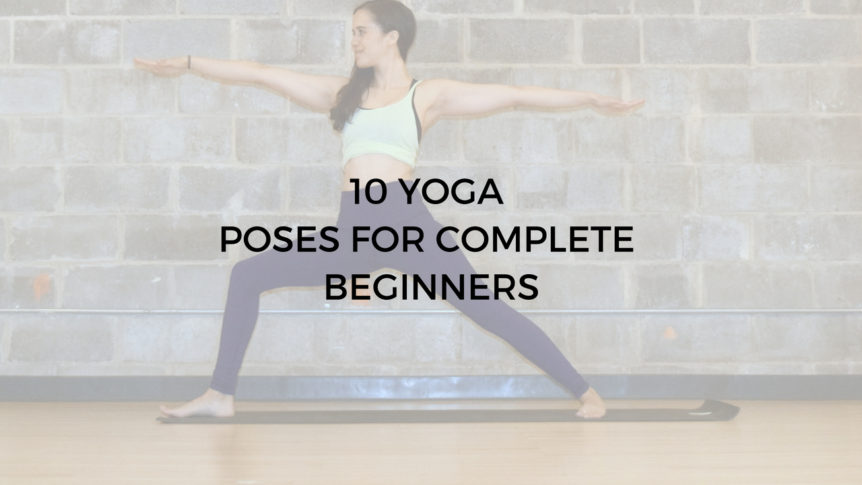First of all, let me congratulate you for deciding to start a yoga practice. Yoga, aside from all of its physical benefits, is a journey towards spiritual awakening, self-discovery, and self-love. And, like any other journey, we all start somewhere. So if you’re feeling lost and confused about where to start, you’re not alone.
My best advice for those starting a yoga practice is to keep things simple. Do your research and find the best style of yoga that best resonates with you and your lifestyle. I see students attending the wrong class types and later deciding that yoga isn’t for them. Check out my “how to start a yoga practice: 5 tips for yoga beginners” for more yoga beginner tips.
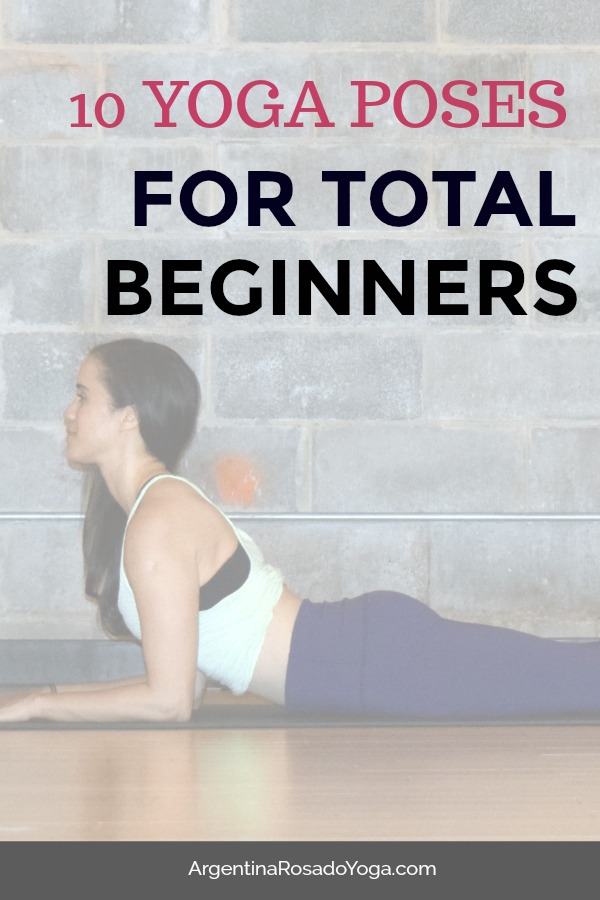
If you’re not ready to hit the public class scene yet, I got just the right poses to help get you started at home. These poses are accessible yet still challenging to the body and mind.
When you attempt these poses, pay close attention to alignment and how they feel in your body. Don’t just look at the picture, try the pose, and hope for the best. Instead, take the time to set up well, feel what’s working, and what’s not working. This, my friends, is where you get to practice mindfulness.
FYI, I will be posting a video class incorporating all these poses. It will be an opportunity for you to practice them in a flow sequence and with further directions on how to link the poses together. Be sure to subscribe so that you don’t miss it.
What you’ll need
1 Yoga Mat
2 blocks
1. Child’s Pose (Balasana)
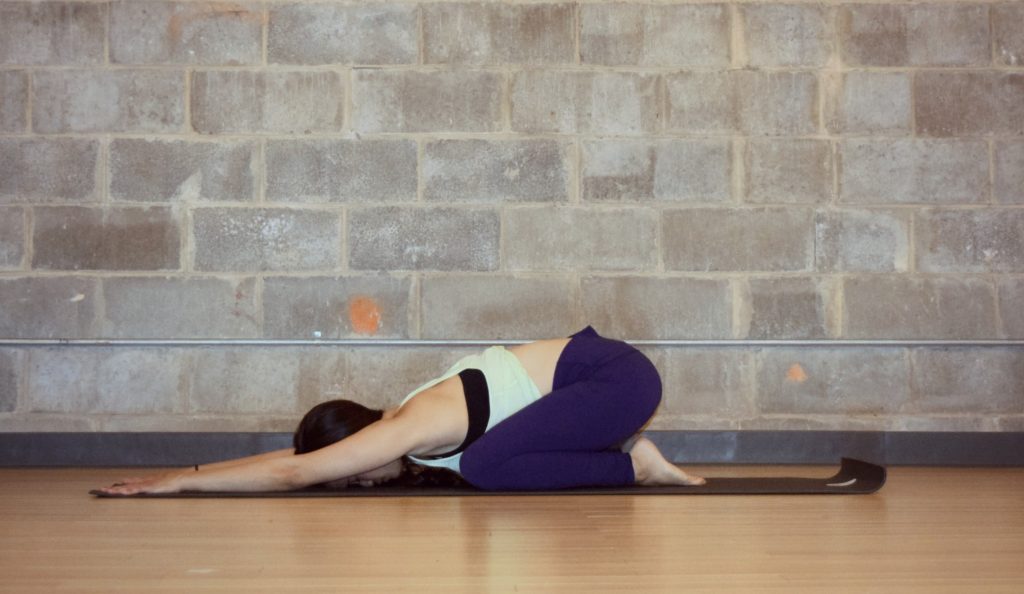
Benefits
Child’s pose is great for opening the hips and lengthening out the spine. It is also a great resting and restorative pose. It serves well at the beginning of your practice to settle the mind, and as a resting pose throughout the class and in between sides.
How-to
Start in a tabletop position (hands and knees).
Bring your big toes to touch so that your heels are a bit separated.
Separate your knees so that they are slightly wider than the hips or as wide as the mat (wide enough so that your belly can somewhat hang in between the thighs).
Sit the hips back onto the heels.
Rest your forehead on the mat and reach your arms forward.
2. Cat & Cow (Bitilasana & Marjariasana)
a. Cow
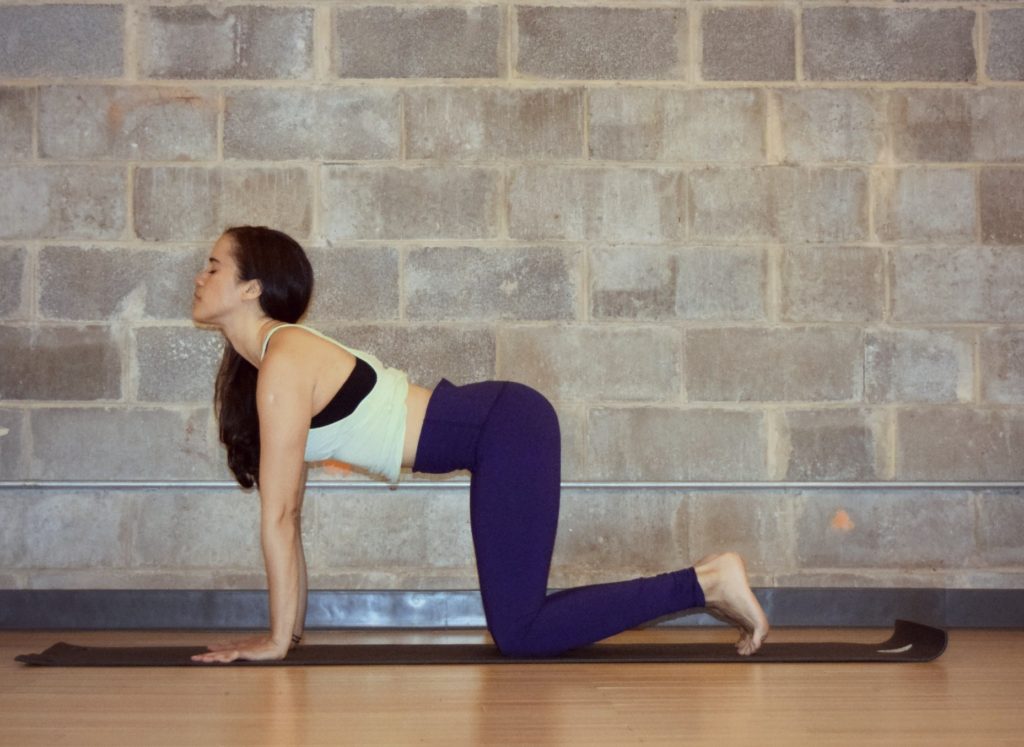
b. Cat
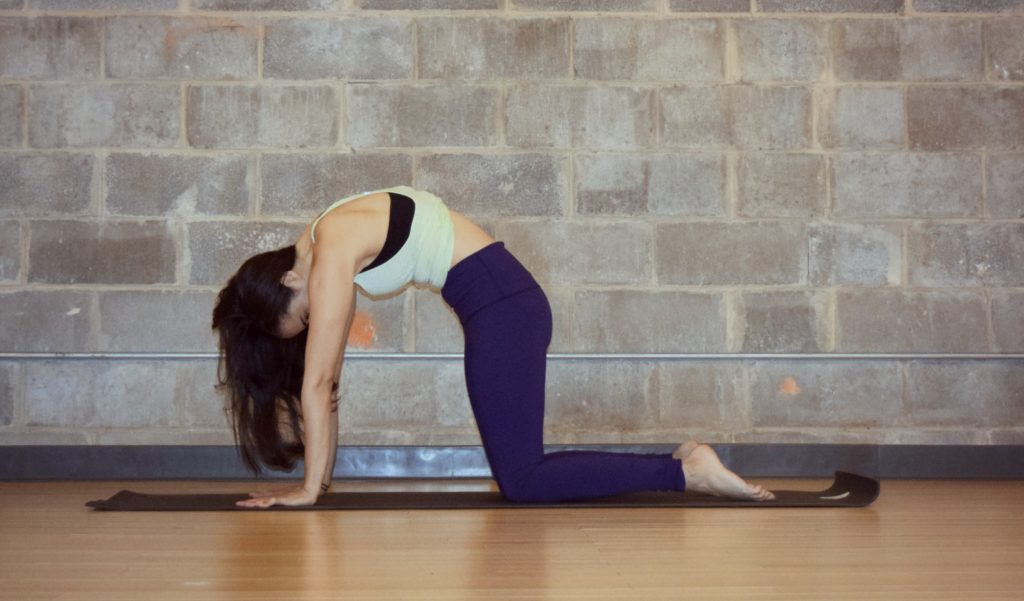
Benefits
Yes, #2 pose is actually two poses combined. This is because Cat and Cow poses are always (or mostly) done alternately. They help wake-up the body and spine while moving slowly with your breathe.
How-to
Start in tabletop position with your shoulders stacked over wrists and hips over the knees.
Spread the fingers and root down through the inner hands (index finger and thumb).
On an inhalation, draw the chest forward as you arch the spine and reach the tailbone back.
On the exhalation, reverse the action by reaching the tailbone down towards the knees.
Push the ground away as you drop the head and tuck chin towards the chest.
Complete about 5-8 rounds.
3. Low Crescent lunge (Anjaneyasana)
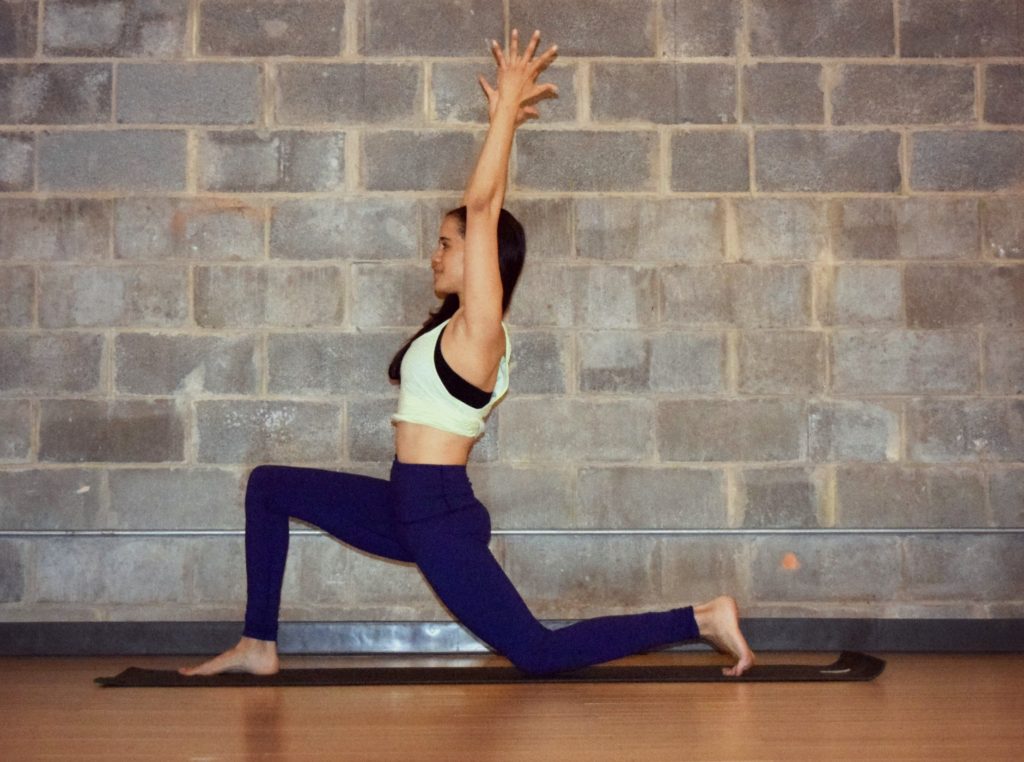
Benefits
Crescent lunge opens the quadriceps and hip flexors on the back leg, strengthens the hamstrings on the front leg, and lengthens the sides of the torso.
How-to
From tabletop position (hands and knees), lift the right knee and step the right foot forward between your hands.
Tuck the back toes, lift the back knee and slide it back a few inches so that it rests slightly behind the hip.
Reach your arms forward and up towards the ceiling.
Bring the palms to face each other and actively reach up through the fingertips.
Engage your abdominals).
FREE YOGA NIDRA MEDITATION to balance the Nervous System, reduce stress and anxiety, and improve total health and well-being.
Enter your info below to get instant access to the masterclass.
4. Forearm Plank (Makara Adho Mukha Svanasana)
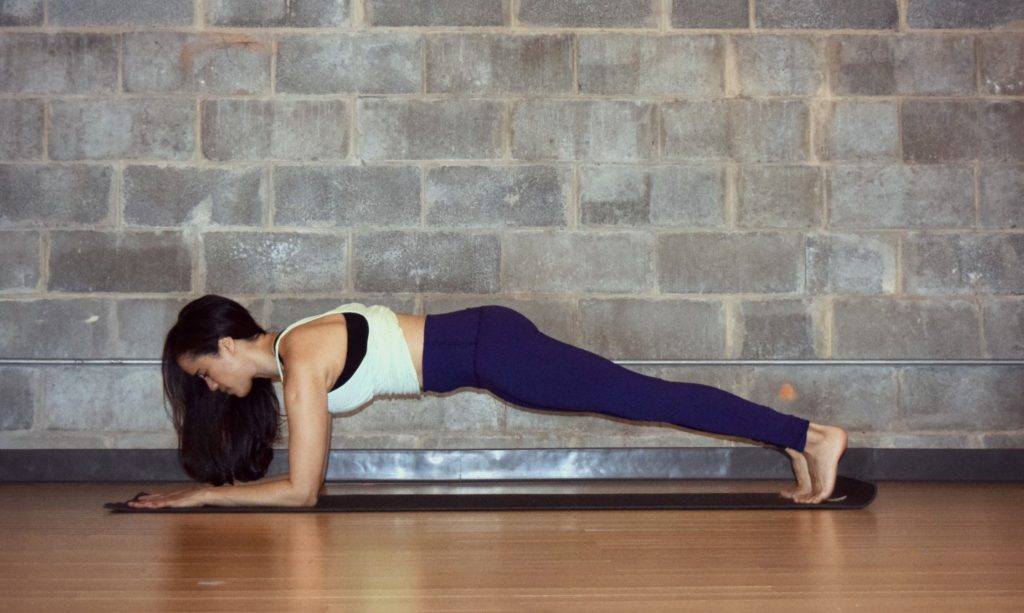
Benefits
The best thing about forearm plank is that it is a total-body strengthener without being weight bearing on the wrists and shoulders. For this reason, it is perfect for beginners looking to gradually build total-body strength.
How-to
From tabletop position, lower your forearms to the floor so that they are parallel to each other.
Reach your right leg back so that the foot is on the floor, and the heel over the balls of the feet (this is a half plank position). Similarly, reach your left leg back. (full forearm plank position).
Once you’re here, ensure that your shoulders are over the elbows (gaze between the thumbs).
Suck the belly in, and reach the tailbone back towards the heels (i.e. avoid puffing out the booty). Keep the thighs firm.
Gradually work on increasing hold times. Start with a 20-second hold then move up from there. You got this!
5. Sphinx pose (Salamba Bhujangasana)
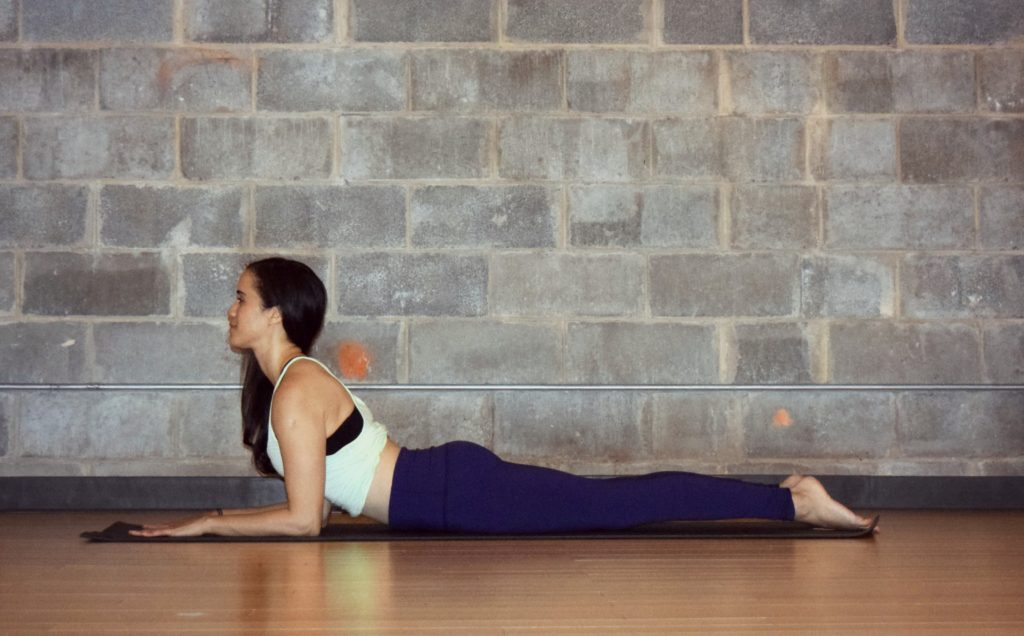
Benefits
Sphinx is a such a yummy stretch for the abdominal wall. It’s a great pose to do after core strengtheners like forearm plank.
How-to
From forearm plank, lower your hips to the floor.
Point your toes so that the tops of the feet press down on the mat.
Keep the forearms in the same position as they were in forearm plank.
Draw the chest forward, and energetically drag the hands back towards you.
6. Cobra (Bhujangasana)
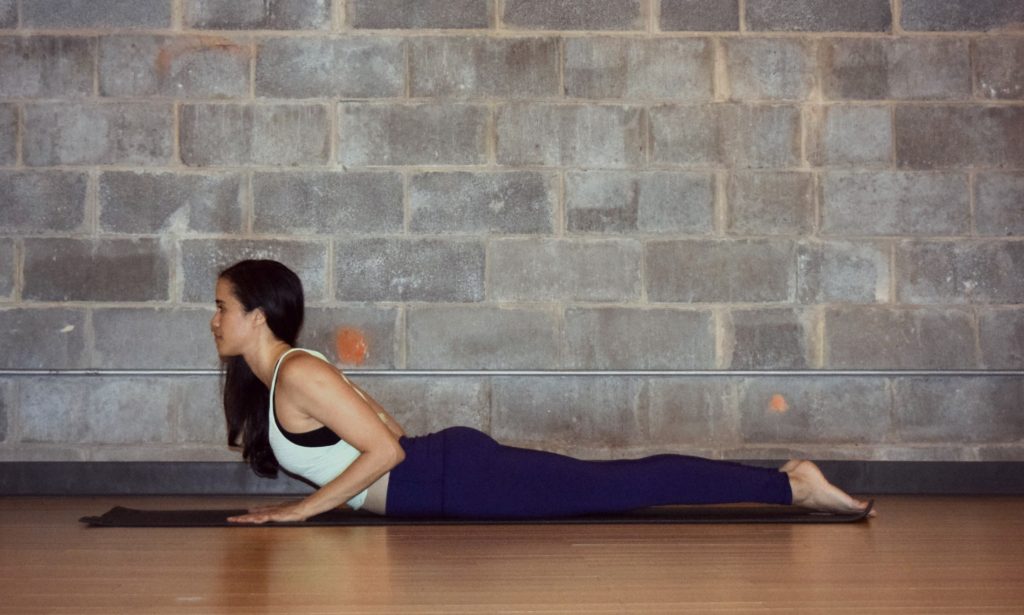
Benefits
Cobra is an accessible, therapeutic backbend that provides a gentle stretch on the hip flexors, abdominal wall, chest, and shoulders.
How-to
Lye face down on your yoga mat.
Zip the legs together with your toes pointed and tops of the feet pressing down on the mat.
Place your hands slightly behind the shoulders with the elbows pointing towards the back of the room.
Hug the elbows in towards the body.
On an inhalation, engage your abdominals and actively press the tops of the feet on the mat as you slowly lift your chest away from the floor.
Energetically drag the hands back (think lying down on a surfboard trying to push off to move forward).
Draw the chest forward and shoulders back.
On the exhalation, lower the chest back down.
Repeat about 3-5 times, or hold the position for about 5 breaths.
7. Wide-legged Forward Bend (Prasarita Padottanasana)
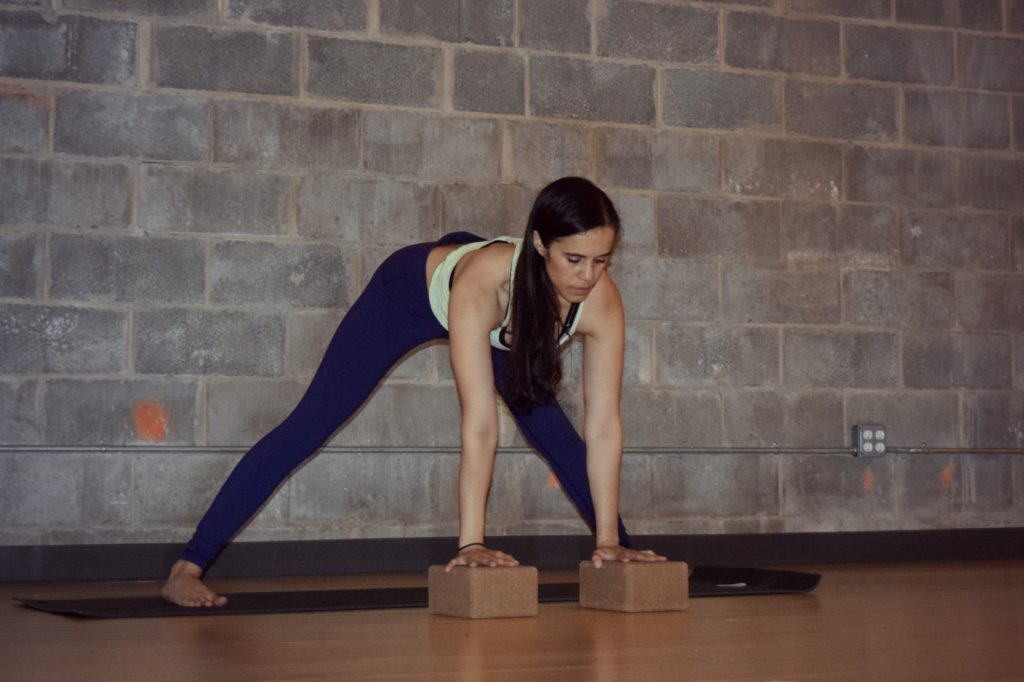
Benefits
Prasarita stretches the hamstrings, glutes, and spine. It strengthens the quadriceps and inner legs (adductors). In this variation, we will use blocks to lengthen out the spine while adding a gentle stretch on the hamstrings.
How-to
Step your feet wide apart (about 3 feet) so that they are parallel and slightly turning in.
Bring your hands to your hips so that your elbows point towards the back of the room.
On an inhalation, hug the elbows towards each other, reach your chest forward and shoulders back.
On the exhalation, start to bend at the hips and lower the torso about halfway down (torso parallel to the floor).
Lower your hands to a couple of blocks, or a stack of books, so that the wrists are right under the shoulders.
Reach forward with your chest, and simultaneously reach the tailbone back.
Engage the quads and abdominals as you take long breaths.
To exit, bring hands to the hips, squeeze elbows in, and leading with your chest, lift the torso back up. Heel toe the feet together back to a standing position.
8. Warrior II (Virabhadrasana II)
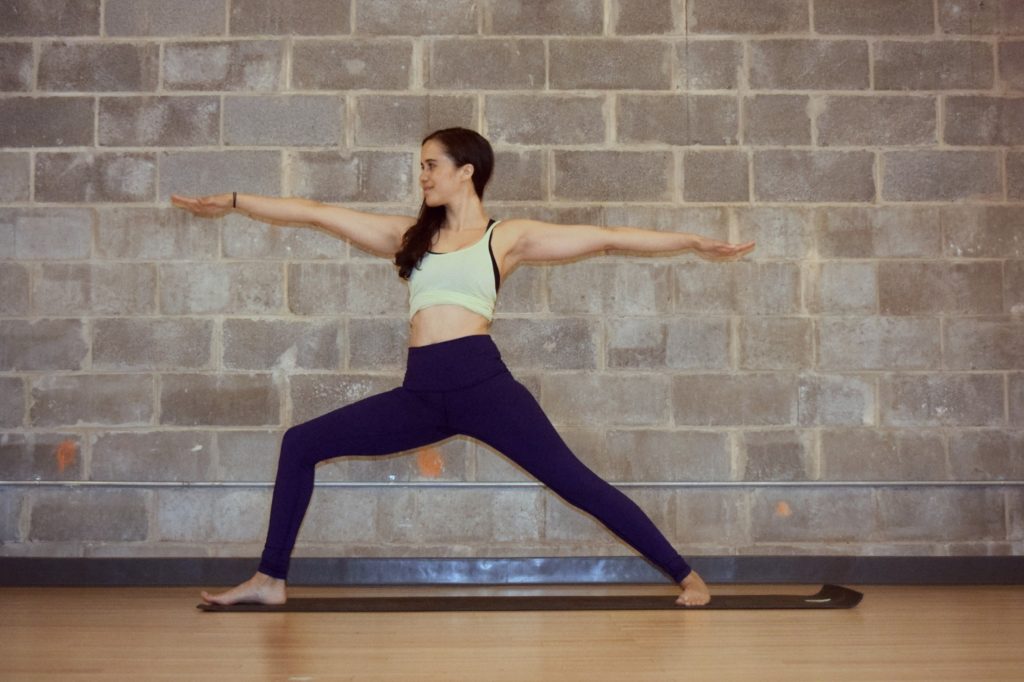
Benefits
Warrior 2 is a challenging and empowering pose (hence, the Warrior name) that is still accessible and simple enough for beginners. It strengthens the hamstring on the front leg, quadriceps on the back leg, and the inner legs (adductors) on both legs. On the upper body, Warrior 2 strengthens the arms and shoulders, and slightly stretches the chest.
How to
From a standing position, step your left foot back about 3 feet.
Position your feet so that the right one faces towards the front wall, and the left one slightly towards the top left corner of the room. Ideally, you want your right heel to either intersect the arch of the back foot, or align with the heel of the back foot.
Bend your front knee so that it’s right over the ankle.
Open the arms into a T-shape with your palms facing down towards the floor.
Once here, keep the pelvis neutral, engage your abdominals, and actively reach the arms in opposite directions (as if you were being pulled by two people).
Gaze over the right fingers.
Keep the right knee from turning in by pressing firmly through all four corners of the right foot.
Hold this pose for five deep breaths. For a challenge, gradually work on holding a bit longer (10-20 breaths).
9. Tree Pose (Vriksasana)
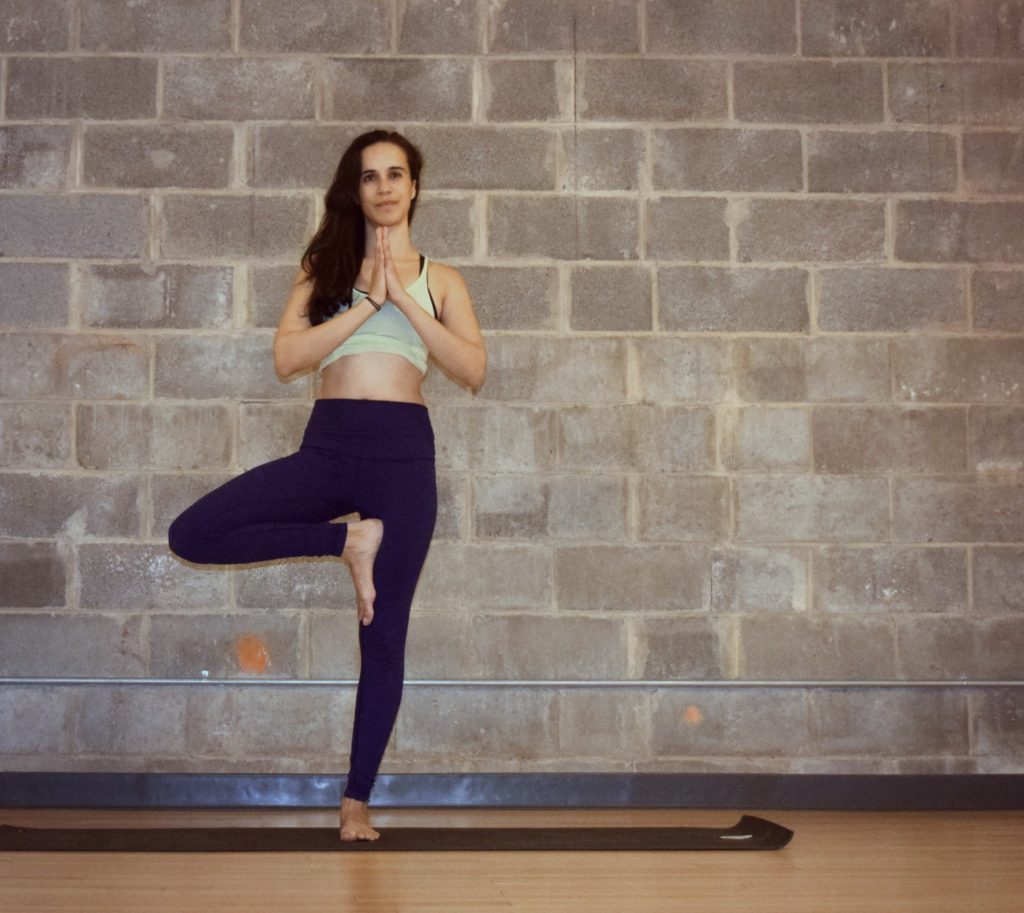
Benefits
Tree pose is a wonderful, balancing pose that helps to cultivate mindfulness as you attempt to balance on one leg. For beginners, this can be a challenging thing. Let’s take a look at how to get into it.
How-to
Start in Tadasana (Standing mountain pose).
Bend the right knee and turn it out to the side so that it points towards the wall on your right.
Use your hand to place your right foot on your left inner shin, or left inner thigh.
Bring your hands together at your chest.
Press your right foot into your left inner thigh and thigh into the foot.
Stand tall and reach up through the crown of your head.
Pick one point to gaze at in front of you.
Breathe deeply, and hold your center strong.
10. Bridge Pose (Setu Bandha Sarvangasana)
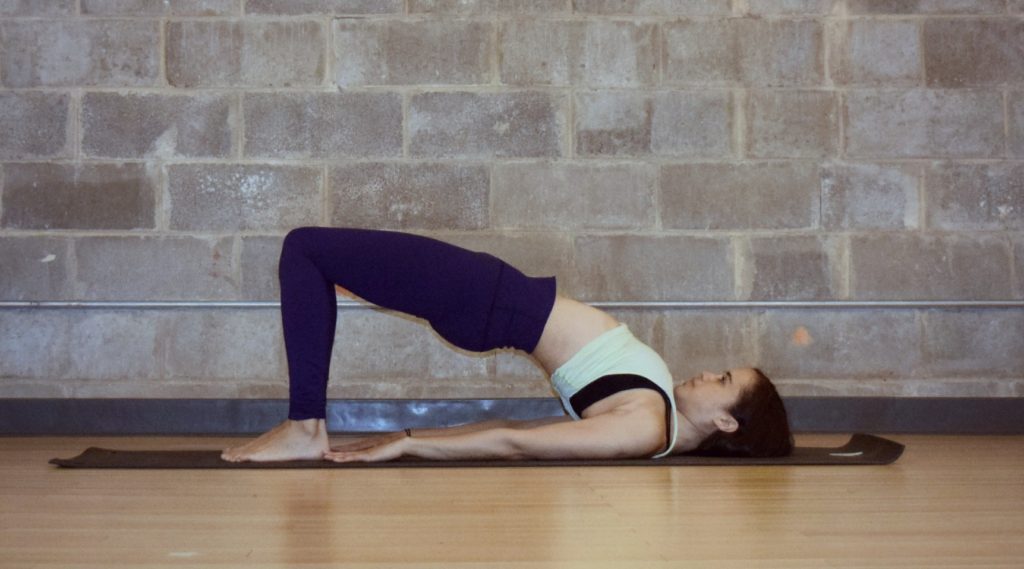
Benefits
Bridge pose strengthen the hamstrings, glutes, and muscles of the back. It stretches the hip flexors, abdominal wall, chest, and shoulders.
How-to
Lie down on the back with the soles of the feet on the floor and knees bent.
Align the knees with the hips (and over the ankles), and the heels with the sitting bones so that the feet are parallel and toes point towards the front of the room.
Place your arms by the sides so that the fingers point towards the heels.
On an inhalation, lift the hips up so that the frontal hip bones reach towards the ceiling.
Press through all four corners of the feet and hug inner thighs towards each other (as if you were squeezing a squishy ball between the thighs).
Breathe here. Hold for about five deep breaths.
FREE YOGA NIDRA MEDITATION to balance the Nervous System, reduce stress and anxiety, and improve total health and well-being.
Enter your info below to get instant access to the masterclass.
